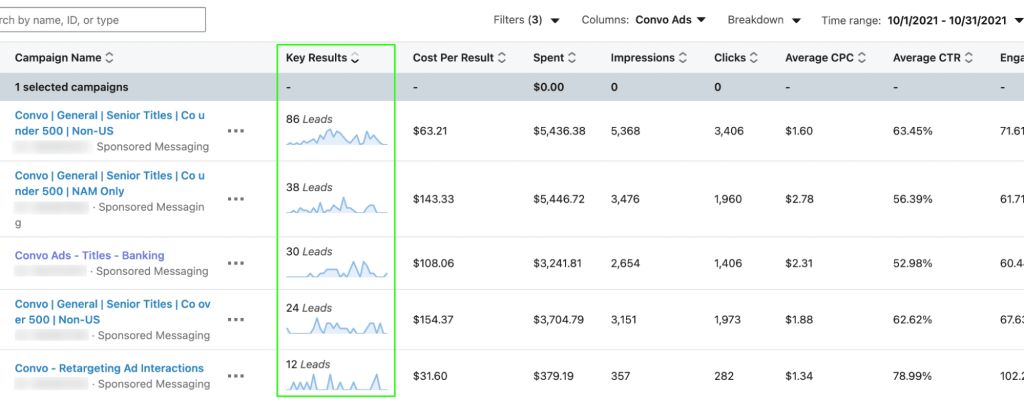Oftentimes as paid media marketers, it’s easy to stick to LinkedIn’s platform reports and conduct business just on the ad side. We can end up thinking that we’ve done our job once we see channel metrics improve. Although platform metrics can be a good indicator of ad performance, they don’t shine light on how successful the campaigns are at reaching deeper lead goals.
With customer generation at the forefront of B2B SaaS goals, it’s pertinent for Marketing to work with Sales to create the best environment for successful paid media strategies.
Shared Goal Setting
Marketing and Sales are part of a detailed process that work towards generating leads. Marketing touches prospects earlier in the customer decision process and sales typically gets involved after the leads have been established. A customer-led strategist will establish a shared goal with the client that is tied back to both parts of the deal process.Having a shared goal to tie both parts of the sale process is the key to providing effective lead generation performance.
Needless to say this goal should cover all paid media channels. Having said that, LinkedIn Ads usually perform the strongest for B2B lead generation and will be our focus for this piece.
4 Tips For Choosing The Right LinkedIn Ads Metric As Your KPI
If you have ever spent time using the LinkedIn Campaign Manager platform, you’ll understand that the reporting available can only tell you so much when it comes to pipeline attribution. There are several metrics one can review to understand baseline campaign performance such as CTR, Click to Open Rate, Bid, and Cost per Lead when running a lead generation campaign. But which metrics are really important? How do you take in platform leads and calculate impact on growing the pipeline?
1. Need to Establish What the End Goal Is
Take a step back with your client to understand what their end goal looks like for the quarter. How many deals do they want to close? What does that translate into for the number of MQLs and SQLs needed? Strategists employing a truly customer-led approach will set North Star Metrics (NSMs) to get an internal goal of a certain number of MQL or SQL leads to align our efforts with what our clients want to see in growth. Once that number is set, we can tailor our campaign strategies and budget accordingly to reach that goal.
2. LinkedIn Leads Do Not Always Equal MQLs
Platform metrics are not always the best indicator for campaign success in driving qualified leads through the sales pipeline. In the example below you can see how the LinkedIn reporting can make your campaign performance seem like it’s doing a great job of generating leads and collecting form fills. Cost per Lead looks reasonable, but in reality these numbers are not accurately reflecting how the campaigns are performing.

3. Get to Know the Sales Side
Knowing the sales process is important for any digital marketer running lead generation strategies. How do MQLs become marked as SQLs? Understanding how leads are qualified through the sales pipeline will clarify what the client’s business is looking for to reach their business goals. On the marketing side, we are able to support Sales by providing leads already further in the pipeline – drive leads that are already their ICPs and qualify in their TAM.
4. Why Marketing and Sales Need to be on the Same Page
Bridging an understanding and knowledge loop between paid media efforts on LinkedIn and sales feedback will allow digital strategists to place value to campaign performance. Having reporting on MQLs and beyond provide valuable insight on true campaign impact. We can now see cost/MQL and lead > MQL > SQL conversion rates. More importantly for our clients, we understand where client dollars are being most effectively spent to generate top tier leads that will feed through the pipeline more easily. Or, we see where the budget has not been doing well and can pivot strategies in a timely manner to prevent budget waste, gathering data on where money should be reallocated to support lead goals. With that data connection, we as marketing partners can establish realistic projections for future quarterly performance to create a consistent cycle of growth and improvement.

Going back to the client example – above we have in-depth reporting for each campaign measuring MQLs and even Non-Fits. Those numbers were provided by the client from their Salesforce data. A deeper campaign analysis report was done with MQL conversion rates and Cost/MQL included which hold heavier weight in gauging performance. Our client realized where strategy was not aligning with their business direction and we were able to change our approach to target altered audiences for better results.
Why Sharing Pipeline Data Is So Important
It’s imperative that this connection is established so LinkedIn campaigns can be guided in the right direction to reach NSMs and client goals. Having access to pipeline data and aligning goals between sales and platform performance are the top priorities when running B2B lead gen campaigns in LinkedIn.
Lastly, client business can suddenly change in one quarter. Being able to pivot to strategize around new goals is a great win for clients. Having detailed reporting that goes in depth connecting to pipeline goals or revenue is the insight clients want to see. The more marketers can work with pipeline numbers from the client’s Sales team, the more the two can bring in quality deals.
Conclusion
Without a feedback loop set up between your clients, it can feel like you are operating in the dark. You are unable to associate ad performance beyond what is shown in the platform. Defining a shared metric for success can most importantly help shape paid media campaigns toward customer generation. When you are able to go beyond demand generation and build strategies based on deep data, your campaigns will begin to have a much larger impact on the business.
-
 CEO
Garrett Mehrguth
CEO
Garrett Mehrguth
Did you enjoy this article?
Share it with someone!
